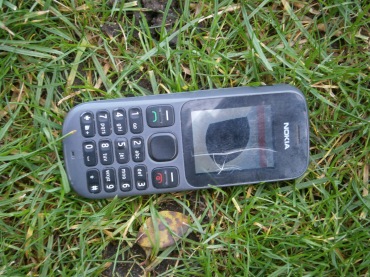Tags
My mobile phone broke the other day, and it made me think of rocky mountains and wild birds. The phone succumbed to a damaged screen after I sat on it, making it unreadable; but the story began when it was initially cracked in May last year, by a hungry Raven’s beak.
Climbing with friends in the Cuillin mountains of Skye, off the west coast of Scotland, we left rucksacks unattended whilst diverting off the main ridge to the summit of Sgurr Mhic Choinnich. On returning, I was surprised to see the rucksack pocket unzipped, with several chocolate bars missing. Nothing else had been taken and the rucksack was undamaged, although my phone was now cracked.
Although I initially suspected a ravenous and unscrupulous mountaineer, subsequent conversations suggested the culprit was a Raven (Corvus corax); a friend climbing a nearby crag had witnessed (helplessly, from halfway up!) a bird calmly and precisely unzip his rucksack at the foot of the crag, and help itself to his lunch. It seems certain that a similar fate befell my chocolate bars, and the cracked phone screen was a result of the Raven’s exploratory pecking. Apparently this is not an unusual phenomenon on the Cuillin; local birds have learnt to exploit the exotic treats which they know mountaineers leave in their rucksack pockets. This versatile intelligence is characteristic of the corvids, and along with their adaptability and boldness, suggests they will fare much better than most in the Eremozoic era.
 I liked the resulting crack on my phone, which did not affect its usability, and which reminded me of the glories of the wild mountains, and of the wild creatures that live there. Mobile phones and similar devices are thoroughly indispensible now for nearly all of us (in richer countries at least), and there’s no doubt that our insatiable appetite for consumer electronics is a significant driver of environmental and social problems, especially in the majority world. Moreover, to me they powerfully symbolise alienation from the rest of the natural world. They encourage absorption in the abstract and virtual, whilst perversely giving the impression of immediacy and “connection”.
I liked the resulting crack on my phone, which did not affect its usability, and which reminded me of the glories of the wild mountains, and of the wild creatures that live there. Mobile phones and similar devices are thoroughly indispensible now for nearly all of us (in richer countries at least), and there’s no doubt that our insatiable appetite for consumer electronics is a significant driver of environmental and social problems, especially in the majority world. Moreover, to me they powerfully symbolise alienation from the rest of the natural world. They encourage absorption in the abstract and virtual, whilst perversely giving the impression of immediacy and “connection”.
I’m convinced of the importance of direct contact with, and understanding and appreciation of, the living world. As long as we erroneously see ourselves as separated from, or somehow above, the rest of the biosphere, there is little chance that we will be capable of rising to the enormous challenge of the extinction crisis. Modern communications technology is a tremendous tool for information sharing, education, and debate on conservation biology – and I’m certainly spending more time in front of my computer as I explore issues around biodiversity and write this blog – but the Cuillin Raven’s cheeky peck reminds of the importance of looking beyond the alienating screen, and maintaining a meaningful, personal connection with nature.
When I sat on the phone the other day, the Raven’s work was finally completed, and the alienating device was dead. Of course, I bought another one straight away – the same model (albeit second-hand), but with a pristine screen. It’s a traditional time for resolutions; this year I reckon I’ll try to spend more time looking up to see the birds fly, rather than staring down at the screen.
“Technology is the knack of so arranging the world that we do not experience it.” Rollo May



Wonderful and insightful post (and very funny), and a brilliant reminder. And, who better to remind you/us than the clever raven? 🙂
(I’ve had a few books on their intelligence in my queue for some time… Really fascinating.)
But the battle is lost as soon as you use the word ‘indispensible’ is it not ?
“For where your treasure is, there is your heart also.”
Thanks for following my blog;yours looks very interesting as well (I do not always reciprocate). Sorry about your phone and your (chocolate) energy bars. Corvids are astonishingly clever birds – they even indulge in pretending to bury food if they know they are being watched by competitors (and then bury it somewhere else while not being watched)…
I only have a small view of a pair of ravens at PsiKeep (http://psikeep.wordpress.com/) but after two years there has been no increase in the number of ravens. Last year all three offspring were lost. This year one is down an two remain. I am not so sure that intelligence alone is going to help these birds survive the changes we are creating.. Would like to add your blog to my blog roll.
Superb post, especially as I was on Skye myself a couple of weeks ago.
It brought back memories of being in the Masai Mara and being told we had to tie the zippers of our tents together with string as the local monkeys had fathomed out how to unzip the tents to raid the luggage.
Pingback: A Raven and a phone | Causing offence